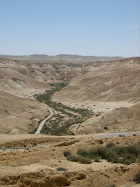-->
Bibliography/Book Review;
Schacter-Shalomi; Paradigm Shift; Wrapped in a Holy Flame, Teachings and Tales of the Hasidic Masters, et al.
Zalman Schacter-Shalomi is an extraordinary person. He grew up in Europe, but his family had the prescience to escape the impending Holocaust and immigrate to the U.S. There, he was trained and ordained as a rabbi within the Chabad Lubavitcher Hasidic movement. He stepped outside of this insular community by attending Boston University, where he engaged in challenging and life-changing encounters with the black minister there, Howard Thurmond, who also served as a mentor to Martin Luther King, Jr. These vista-expanding encounters opened up Schacter-Shalomi to numerous other possibilities of viewing the world and his place in it.
Along the way to becoming a truly 20th Century Renaissance man, he dropped acid with Timothy Leary and explored many forms of Eastern spirituality and mysticism, among other things. The confines of Lubavitcher Hasidism could no longer contain him, although he remained deeply anchored within his Jewish identity. He saw a need for another avenue to express Judaism in a meaningful way for himself and for many alienated Jews, particularly children of the 60’s. Eventually, through his efforts and teachings, and with a growing group of sympathetic students and followers, the Jewish Renewal Movement was born.
Paradigm Shift is akin to the Declaration of Independence of the Jewish Renewal Movement. It posits that the Jewish tradition, as any religious tradition, needs to have an evolutionary nature to it and remain receptive to adaptation as times and cultures change. Particularly with the advent of the Reform movement in the 1700’s, the tension between tradition and innovation has been stretched tremendously. Schacter-Shalomi warns against “throwing the baby out with the bathwater” by going too overboard with reform and innovation which may eliminate valuable and essential aspects to the true core of spirituality lying within. He advocates taking a critical look at all aspects to traditional liturgy, doctrine and dogma. However, before throwing anything onto the refuse heap, examine it closely from a perspective of deep spirituality and mysticism to ascertain if a new and spiritual interpretation can be extracted from it or applied to it, bringing new life into it relevant to today. He concludes that many things rejected by other reform movements may be worth saving applying this approach. This is because many of the other reform movements approached Judaism as more of a repository of intellectually and culturally based morality and way of life, rejecting what they perceived as the irrational superstitions of deep spirituality and mysticism. Through his experience and experimentation with a wide variety of forms of spirituality and mysticism, everything from many forms of Eastern mysticism, to Sufism, Christian mysticism, and Native American traditions, Schacter-Shalomi saw the value and reality of what was conveyed in these forms, and realized that Judaism had its own unique version. He has been a featured participant in many inter-tradition conferences, including some organized by the Himalayan Institute, the yoga/Vedanta organization I have been connected with for 30 years.
Spirituality and mysticism operate in a realm of the nonrational, distinct from the irrational eschewed by other reform movements. Rationality and nonrationality are parallel realms, not necessarily inconsistent. He has encouraged discovery and experimentation to salvage traditional forms by infusing them with this new perspective. One basic tenet of Jewish Renewal is of egalitarianism, that women and men stand on equal ground in all respects concerning spiritual and religious matters. Another aspect is a willingness to recognize the validity of other traditions, and incorporate elements of them into the Jewish experience. Yet another is an emphasis on individual and collective responsibility and sensitivity as participants in the larger world community, which has engendered a focus on eco-kashrut, application of kosher principles to environmental/green causes, and spiritually-grounded social activism. Schacter-Shalomi’s influence on modern Jewish thinkers and writers is far-reaching. In my search for books by modern writers about Jewish mysticism and Kabala, it is hard to find an author who does not acknowledge gratitude and guidance by Schacter-Shalomi, and with good reason. I highly recommend this book as a foundational book of his thinking, and any other book he has authored, contributed to, or in which the author acknowledges his influence. There is also a wonderful biographical sketch of him contained in the book A Rare and Precious Thing; The Possibilities and Pitfalls of Working with a Spiritual Teacher by John Kain; and he is a key figure in the fascinating book The Jew in the Lotus by Rodger Kamenetz, which chronicles a visit by several Jewish leaders with the Dalai Lama in India.
For more information about Reb Zalman and Jewish Renewal, visit their main website at www.aleph.org. For a website dedicated to social activism rooted in Jewish Spirituality, visit www.theshalomcenter.org. Both of these sites are listed in the “Links” section of the Yoga and Judaism blog.




























No comments:
Post a Comment